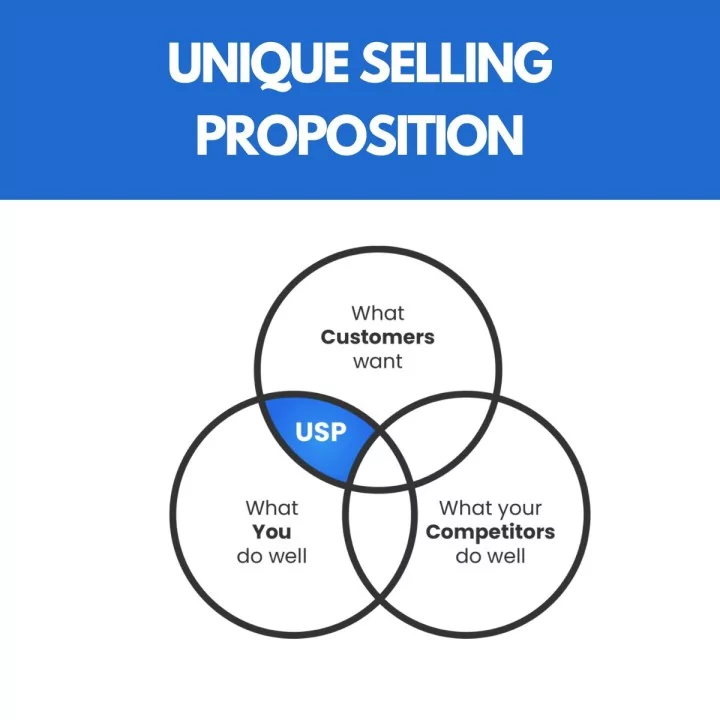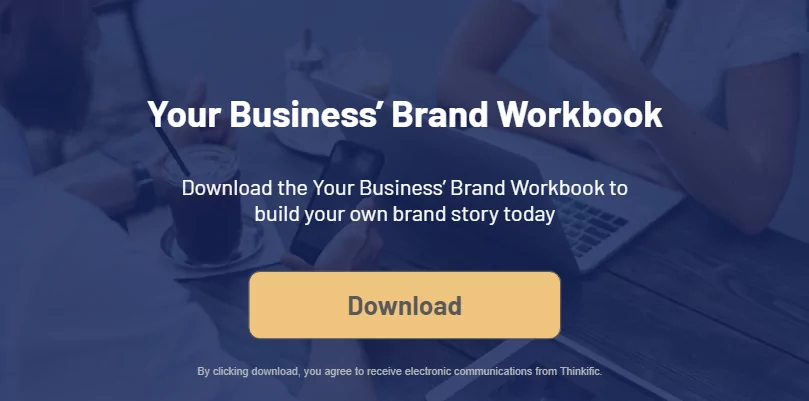Running a business in today’s world is increasingly competitive. Having a laser focus on your audience is one of the keys to survival.
Paying attention to the wants and needs of your customers is a good start. However, even your best efforts can fall flat without a roadmap. How do you create such a guide for your business and its marketing strategy?
Simple: craft an effective unique selling proposition (USP) and value proposition (VP).
But wait: aren’t the USP and VP essentially the same? Not quite!
If you find yourself confused about unique selling proposition vs value proposition, then you’ve come to the right place. In this guide, we’ll explain the difference between these two components , as well as how to find your own USP and VP.
If you already have some familiarity with the topic, feel free to skip ahead to the good parts.
- What is a unique selling proposition?
- What is a value proposition?
- Unique selling proposition vs. value proposition
- How to find your USP and VP
- Proposition your customers
What is a unique selling proposition?
 Image source: Linkedin
Image source: Linkedin
A unique selling proposition is sometimes referred to as a unique value proposition (UVP). Whether you call it USP or UVP, the concept drives your marketing efforts. It is a primary differentiating factor from the competition. It is specific to your business and targets a major pain point of your customers.
Typically, a unique selling proposition is short enough in description to fit within a single sentence. For example, a small business VoIP (Voice over Internet Protocol) provider may offer the lowest prices or highest service uptime in the industry as its USP.
USP vs Tagline
A USP is typically summed up in a sentence or two. This often leads to it being confused with a business tagline.
Your tagline is a short concise statement often associated with your company name and logo. An easily recognizable example of this is the Nike “Swoosh” and the tagline “Just do it.” Compared to the USP, the tagline isn’t really telling the customer anything that differentiates Nike from its competitors. Instead, it relays an added level of brand recognition.
For example, if you run an online language course your tagline could be “Travel the world through language.” The USP for your online course would be something like “Ten-minute language lessons that actually fit into your busy schedule.”
What is a value proposition?
A value proposition is a collection of ideas that define what your company and products can do for customers. From a marketing perspective, the VP is a concise declaration of the benefits that your company promises to deliver to customers. It’s a summation of your product, brand, and industry experience.
 Image source: Smashbrand
Image source: Smashbrand
A value proposition shapes the overall marketing strategy of your company. It helps buyers understand what your brand offers and what they can expect from your products or services. In other words, it answers the question of what value are you offering.
It’s important that any value proposition clearly communicates to customers what your company offers. For example, if you provide legacy system migration, your value proposition would be the benefits of migration, including saving time and money. Your competitors would share a similar VP – it doesn’t have to be unique (but distinguishing yourself can help).
For the same example, the USP could be “fastest average time to market.”
Unique selling proposition vs. value proposition
Okay, so a USP addresses a major pain point showing the value of your brand. A VP states the value your business offers its customers. Isn’t that essentially the same thing? Confused yet?
The difference between a value proposition and a unique selling proposition lies within scope and focus. USP focuses on one or two major differentiators. It demonstrates superiority over your competitors. In this way, a USP is very specific. Strategically, it must not only set you apart from alternatives but also strongly appeal to your target audience.
In contrast, a value proposition has less focus with a wider scope. A VP is a concise summary of what your business brings to the table for potential customers. It shows the common pain points that your company addresses (or plans to).
This means a value proposition goes beyond marketing campaigns. It also helps position your brand and guides how you communicate with customers. And, as we mentioned, it’s likely your competitors will have a similar or overlapping value proposition as yours. Comparatively, a USP should be unique to you.
A VP is part of the vision or long-term plan for your business. It’s less likely to change as your business grows. A USP is focused on the why and now for your customers. As market trends evolve, likely, your USP might too.
Failing to craft a USP or VP may be the reason you’re failing to convert website traffic into sales.
How to find your USP and VP
When it comes to the battle of unique selling proposition vs. value proposition, there isn’t a winner. You need both to communicate your products and services to your companies. For freelancers like online course builders, a USP and VP are critical to building a personal brand.
So how do you find your USP and VP? Follow these steps to craft these foundational business propositions.
 Image source: Unsplash
Image source: Unsplash
Both your USP and VP should be based on the wants and needs of your target audience segments. Who buys from you? Are there common traits, beliefs, behaviors, or desires of your repeat and loyal customers?
Demographic and behavioral data will give you major insight into what your customers need from you (and your competitors). You can also use customer surveys and feedback forms to find out what the top pain points are for your customer base.
More detailed customer knowledge will shape your USP by ensuring it addresses the most important pain point, and it can inform and educate you on untapped areas for crafting your VP.
If you write a course about investing in domain names, your end goal is to sell it. However, this line of thinking will not guide your proposition writing. Instead, focus on what problems are solving for potential customers. What are the benefits of your product or service?
For example, with the investing course, you’re offering several solutions. One pain point solved is how to make money in the short-term, while another is creating a passive income. Understanding what solutions you offer is crucial to curating your VP.
For your USP, you want to focus on one aspect of your brand that offers an obviously better solution than your competitors.
Both your USP and VP need to be short and easy to understand. Think of your value proposition as your elevator pitch—only between a couple of floors! Highlight the most desired or prioritized benefits of your company.
Your unique selling proposition needs to be razor-sharp in brevity and clarity. With 49% of people concerned their attention spans are shorter than they used to be, if it takes a paragraph to explain your USP, you’ve likely already lost a prospect’s attention.
It’s important to be truthful and transparent with all of your brand messaging. When writing a USP like “The number one product in its category”, you need to make sure it’s factual – no half-truths allowed.
If your customers spot what appears to be dishonesty, trust is gone. If they can’t believe something as short and simple as your USP, what can they believe about your products?
The same idea applies to value propositions, although to a lesser degree. Your value proposition contains a set of pain points you are addressing. Granted, you may have a hitch in one area from time to time. However, as long as the value proposition drives your business, it’s still a true statement.
 Image source: Unsplash
Image source: Unsplash
Never forget that USP has the word “unique” name. So tell your customers something unique. Put your fingerprints on your brand. Don’t say your USP is that your sales call center “increases customer satisfaction.” While that may be true, it will be true for your competitors.
Being more specific can help get your USP across. The statement “decreases customer wait times by 66%” gives customers a specific way in which your company creates value. (Just remember: only use numbers like this if you can back them up).
Speaking of value, while VPs don’t need to be unique, they should be specific. For example, don’t say your company “improves the lives of our customers.” How does it improve their lives? Does it save them time and money? Does it eliminate mundane, manual tasks? Use the common pain points of your target audience to craft a value proposition that sells.
Proposition your customers
We’re not here to debate the importance of a unique selling proposition vs. a value proposition. The key takeaway is that your business needs both. Each one has its purpose. Together, they will form your brand identity, marketing strategy, and your target audiences.
Follow the best practice in this guide and you’ll be crafting winning USPs and VPs that make Fortune 500 companies jealous!







